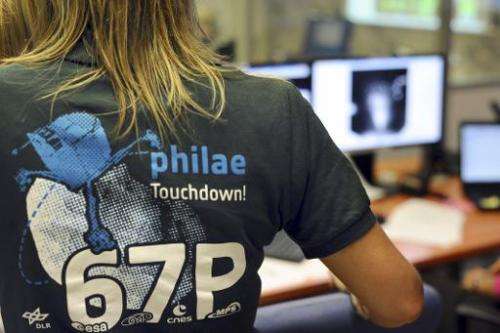Rosetta comet-landing is Science's 2014 breakthrough

The top scientific breakthrough of 2014 was the European Space Agency's Rosetta spacecraft's rendez-vous with a comet, the US journal Science said Thursday.
After leaving Earth in 2004, the Rosetta spacecraft caught up with the comet known as 67P/Churyumov-Gerasimenko in August, then sent its Philae lander down for the first-ever soft landing on the comet itself.
While the probe soon went dark, hopes are high that it will reawaken next year and send back more scientific data about conditions at the comet.
"Philae's landing was an amazing feat and got the world's attention," said Tim Appenzeller, news editor of the journal Science.
"But the whole Rosetta mission is the breakthrough. It's giving scientists a ringside seat as a comet warms up, breathes, and evolves."
Other top feats in the journal's annual top 10 issue included:
- A series of papers on how certain dinosaurs evolved to become birds.
- Research that showed blood from a young mouse can rejuvenate the muscles and brains of older mice, leading to a clinical trial in humans with Alzheimer's disease.
- Teams of termite-inspired robots that collaborate to get a task done without human supervision.
- The development led by IBM of computer chips that mimic the architecture of a human brain.
- New ways of growing cells that closely resemble beta cells, the insulin-producing cells of the pancreas, as a new avenue for studying diabetes.
- The discovery that Indonesian cave stencils and animal paintings, once thought to be 10,000 years old, were actually between 35,000 and 40,000 years old.
- Advances in manipulating the memories of mice using optogenetics, or beams of light.
- Cheap satellites with sides that are just 10 centimeters (four inches) squared, called CubeSats, were hailed for their foray into "real science."
- The engineering of synthetic E. coli bacteria that harbors two additional nucleotides—X and Y—in addition to the normal G, T, C and A that make up the standard building blocks of DNA.
More information: www.sciencemag.org/site/special/btoy2014/
Journal information: Science
© 2014 AFP





















